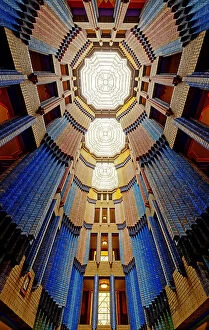Peter Behrens Collection
Peter Behrens was a prominent figure in the world of architecture and design, known for his contributions to Expressionism and expressive architecture
All Professionally Made to Order for Quick Shipping
Peter Behrens was a prominent figure in the world of architecture and design, known for his contributions to Expressionism and expressive architecture. Born in Germany, he made significant contributions to the field during the early 20th century. One of his notable works is the chair he created in 1902, showcasing his innovative approach to design. This piece exemplifies Behrens' ability to blend form and function seamlessly. Behrens also designed a country house in the Taunus mountains in 1933, which showcased his mastery of creating harmonious structures that coexist with their natural surroundings. Another remarkable project attributed to him is The German Embassy in Petersburg. Although artistically anonymous, it reflects Behrens' distinctive style through its grandeur and attention to detail. The AEG Montage Plant by Peter Behrens stands as a testament to his architectural prowess. Its anonymous artist captures the essence of this industrial masterpiece that showcases both functionality and beauty. Similarly, the building for the aeronautical section of AEG near Berlin demonstrates Behrens' ability to create structures that embody both practicality and aesthetic appeal. Throughout his career, Peter Behrens remained an enigmatic figure as seen through various anonymous artworks depicting him at work or capturing moments from important projects like public prayers before construction began on new German Embassy buildings or even posters promoting collaborations between him and AEG from 1907-1914. In addition to these monumental works, Behrens also left behind smaller yet equally impactful designs such as The Antiqua Type created alongside Richard Both in 1914. This typographical innovation showcases their shared artistic vision while pushing boundaries within graphic design. Lastly, we cannot overlook one of his most significant achievements - designing Neolog synagogue in Zilina (Slovakia) back in 1928. Though anonymously depicted by artists who captured its magnificence on canvas or paper; this structure remains an enduring symbol of religious unity brought forth by Behrens' visionary approach.


















